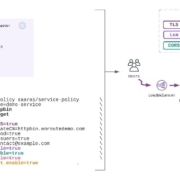Misconfigurations are the leading cause behind security incidents in Kubernetes-orchestrated or otherwise containerized environments. Without proper configuration in place, applications would run into problems ranging from noncompliance and inconsistencies to performance bottlenecks, security vulnerabilities, and functionality failure. Therefore, configuration management is a critical component in a software development lifecycle for maintaining systems in a desired, consistent state.
According to Red Hat’s State of Kubernetes Security report, misconfigurations were the leading cause behind security incidents in Kubernetes-orchestrated or otherwise containerized environments. Without proper configuration in place, applications would run into problems ranging from noncompliance and inconsistencies to performance bottlenecks, security vulnerabilities, and functionality failure. This would make cloud-native systems unstable and cause them to become a liability to businesses. For this reason, configuration management is a critical component in a software development lifecycle for maintaining systems in a desired, consistent state. However, the way configuration management is done has been evolving over the years. This post traces the history of configuration management, focusing on how GitOps handles this critical aspect of running cloud-native applications today.
Source de l’article sur DZONE




